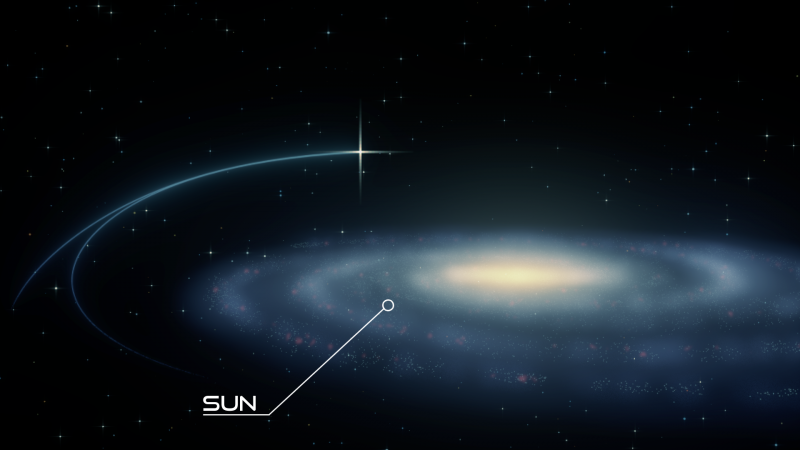Scientists have discovered a unique hyper speed double star

German astronomers from the University of Erlangen - Nuremberg, working with scientists from the California Institute of Technology, found in the Milky Way a double star PB3877, moving with uncharacteristically high speed. This speed is probably enough to overcome the gravity of our galaxy. At the same time, its high speed is inexplicable from the point of view of the existing models of galactic development.
Hyper speed astronomers refer to stars whose speed is significantly different from the expected speed inherent in most stars in a selected area of the galaxy. Ordinary stars in the Milky Way move at speeds of the order of 100 km / s, and hyper-speed stars move at speeds of about 1000 km / s. The first such stars were found quite recently, in 2005.
')
Until now, about two dozen hyper-velocity stars have been found, but all of them were ordinary single luminaries. In addition, hyper-speed stars are usually found near the center of our galaxy, where, like many other galaxies, a supermassive black hole lurks. Her enough to give unusually high speeds carelessly flying past the stars.
The uniqueness of the PB3877 double star system lies in the fact that it is located on the edge of the Milky Way, 18000 light years from us. Analysis of its trajectory showed that it could not fly near the galactic center, which means that the black hole did not participate in imparting to it a huge current speed.
Scientists today are not aware of any other mechanisms that could accelerate a double star to such a speed without damaging the dynamic equilibrium of the system. A supernova explosion or collision with other stars would inevitably destroy the binary system.
Astronomers offer a preliminary explanation of this unusual phenomenon: the system may have come to us from another galaxy, and soon, probably, will leave ours to continue its journey. Her movement will help physicists in calculating the amount of dark matter present in our galaxy - by going through several models of the distribution of halo of dark matter in the Milky Way, scientists have calculated that only if there is an extremely large number of its double star will not leave us.
It is interesting that at first this system was mistaken for a single hot star when it was discovered in 2009 among the data of the digital Sloan sky survey in 2011. But then her spectrogram was thoroughly studied using the Keck-2 (Keck II) 10-meter telescope and the Very Large Telescope (VLT) at the European Observatory in Chile.
“When we looked at the new data, we were surprised to find weak absorption lines that did not at all correspond to a hot star,” rejoices California astronomer Thomas Kupfer [Thomas Kupfer]. “It meant that the hot star has a much cooler companion.”
The surface temperature of a hot star in a binary system is 5 times higher than that of the Sun, and that of a cold one is 1000 degrees lower than that of our star. In this case, the mass of a hot compact star is 0.5 of the solar, and cold - 0.7.
If the PB3877 system arrived to us from the outside, it had to interact with the stellar currents located on the edge of our galaxy - the so-called remnants of dwarf galaxies, which were not lucky to encounter the larger one. But the data available to astronomers did not allow us to associate the appearance of a double star with any of the known stellar streams.
Source: https://habr.com/ru/post/392941/
All Articles